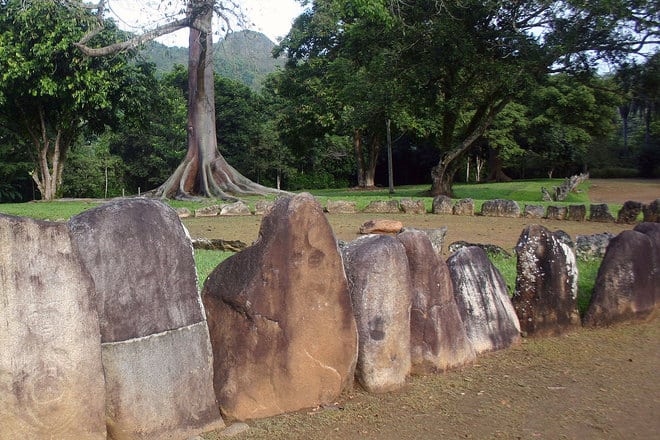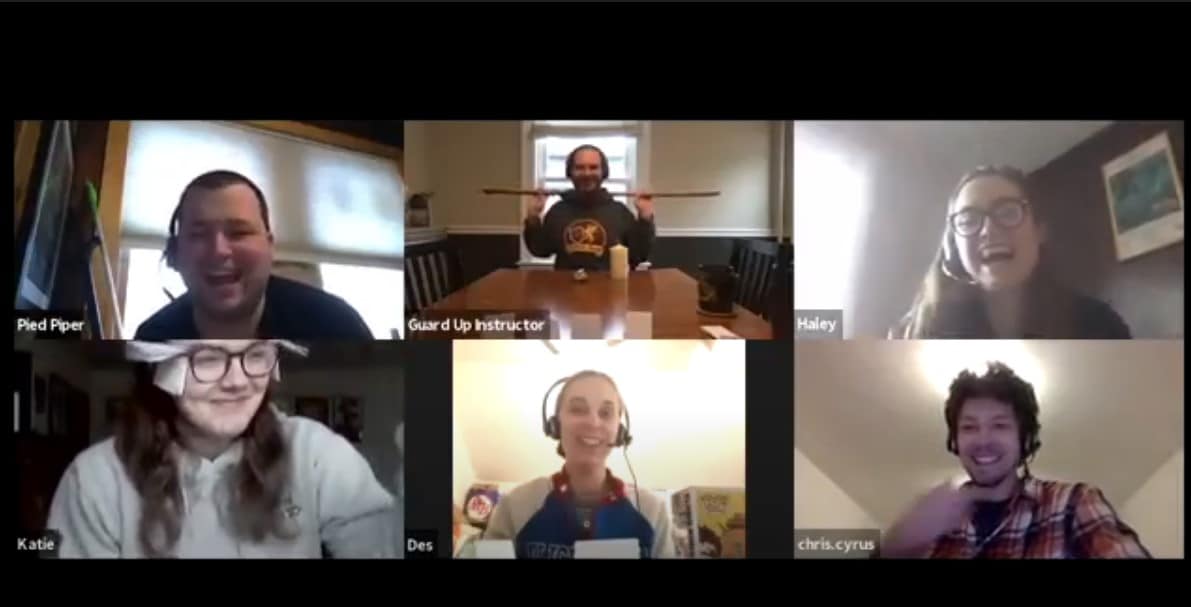By Meghan Gardner, Cultura Connector, and Claudia A. Fox Tree, Cultura Connector
When game developers and filmmakers dive into cultures as their inspiration for their next big project—be it a video game, a role-playing game (RPG), live-action role-play (LARP), or a film or TV series—Indigenous cultures often provide a tempting source of material. However, incorporating these elements without a deep understanding and respect for their significance can lead to a host of issues, from cultural appropriation to the reinforcement of outdated stereotypes, affecting both the representation of and the real-life conditions for Indigenous communities.
Cultural Borrowing: More Than Just Aesthetic
It’s a common sight in games and on-screen: Indigenous symbols and practices used as shorthand for exoticism or mysticism. In an RPG, characters might wear tribal masks without context, or a LARP event might feature rituals stripped of their true cultural meaning. When used carelessly, these elements can reduce elaborate and long-standing traditions to mere costumes or backdrops, ignoring their deep roots and significance.
This casual use of cultural symbols undermines the complexity and richness of the cultures they come from and also risks perpetuating a distorted and superficial understanding among audiences. To address this, a more thoughtful approach is needed. Instead of directly lifting these elements, creators can engage in deep research to understand the broader cultural, historical, and social contexts of the symbols they wish to represent. This research can then inspire the creation of original content that echoes the thematic richness of real-world cultures without appropriating their specific sacred or culturally significant symbols.
Additionally, developers and creators can benefit from partnerships with cultural heritage organizations or directly involve Indigenous-identifying educators and advisors (specifically, active members of, and lived experience within, those cultures) who can provide guidance on cultural representation. These collaborations can help ensure that any cultural elements integrated into the narrative are done so with respect and accuracy, honoring the source rather than exploiting it. Such practices prevent cultural insensitivity and enrich the game or show’s world-building, offering players and viewers a more immersive and respectful experience.
Stereotypes That Stick
RPGs, LARPs, and fantasy media often lean on familiar archetypes: the wise sage, the fierce warrior, and the mysterious shaman. Yet, when these roles are designated to Indigenous characters, they frequently perpetuate outdated stereotypes that don’t capture the complexities and contemporaneity of Indigenous lives. These simplified portrayals can reinforce perceptions, portraying Indigenous cultures through a lens that’s both narrow and often romanticized.
As mentioned above, creators can start by involving Indigenous writers and cultural advisors in the development process, ensuring that characters and stories reflect a more accurate and nuanced view of Indigenous cultures. This inclusion helps to break down clichés and introduce a wider range of characters with diverse personalities, backgrounds, and stories that go beyond the traditional archetypes.
Another solution is to provide character development by focusing on individuality rather than ethnicity alone. This means creating Indigenous characters whose roles and identities aren’t defined solely by their cultural background but are integral to the narrative in ways that any character would be. By doing so, games, films, and series can offer a more genuine and respectful representation, highlighting Indigenous communities’ diversity.
The Ripple Effects on Real Communities
The way Indigenous cultures are depicted in games and media doesn’t just stay within the confines of those worlds. For example, when sacred items appear as game accessories, it often leads to mass production and commercial exploitation. This not only strips Indigenous communities of cultural respect but can also rob them of potential economic benefits, including compensation and possibly a share of profits if the culture is the major focus of the project. Additionally, these misrepresentations can distort public understanding of Indigenous issues, complicating efforts to address real-world concerns like sovereignty, return of ancestors (bones) and ceremonial items from museums, and cultural preservation, such as language reclamation, seriously.
To mitigate these negative impacts, creators can implement measures that respect and protect the integrity of Indigenous cultural elements. One approach might be offering licensing agreements that involve Indigenous communities in the profits derived from their cultural contributions (but only with their permission). This ensures that communities are compensated fairly and maintain control and final say over how their culture is represented and used.
Creators can also focus on educational outcomes by integrating accurate cultural histories and contemporary issues facing Indigenous communities into their narratives. As mentioned before (are you seeing a trend?), through collaborations with Indigenous historians and cultural experts, ensuring that the content not only entertains but also informs and educates audiences about the realities of Indigenous life today.
Distinguishing Fantasy from Reality in Game Design
In the realm of fantasy-based games, there’s a delicate line between crafting a rich, imaginative world and blurring the line of fantasy with the reality of existing cultures. Indigenous cultures are not relics of the past or mythical entities but are living, breathing communities that still thrive today. It’s crucial for game developers to recognize this distinction to avoid trivializing or mythologizing real-world cultures.
When developing fantasy games, the temptation might be strong to draw on Indigenous cultures’ visual or spiritual elements to add a layer of “authenticity” or mystique. However, this approach can inadvertently present these cultures as ancient or fantastical, rather than acknowledging their contemporary existence, let alone relevance. This distorts player perceptions of these cultures and contributes to broader misunderstandings and disrespect.
A more responsible approach involves creating entirely new, fictional cultures for fantasy settings, which can be inspired by a blend of many influences while carefully avoiding reinforcing stereotypes or direct appropriation of identifiable cultural symbols and practices. For example, a film that is about pirates and ghosts can be fantasy. Still, when it takes place in a real-life place, the Caribbean, it should not then introduce Indigenous people via stereotypes (cannibalism). By creating new fictional cultures, developers can enrich their games with diverse, intriguing worlds without risking harm to real communities.
When adapting elements, developers can (yup – you guessed it) integrate Indigenous consultants into the creative process to ensure that any borrowed cultural elements are handled with care and respect. These experts can guide developers in understanding which aspects of a culture are appropriate to adapt and which should be avoided to prevent cultural insensitivity, misrepresentation, and perpetuation of stereotypes.
A Call for Indigenous Creation
The call for more ethical creation in these entertainment mediums is getting louder. More developers and producers are realizing the importance of consulting with Indigenous cultural experts and communities from the conceptual phase through to production. This collaboration helps ensure that portrayals are respectful and accurate and that they contribute positively to the cultural landscape.
However, there is an even better approach: investing in Indigenous-led storytelling across all these platforms. The narratives naturally become more authentic and diverse by empowering Indigenous creators to tell their own stories. This enriches the games and shows and broadens the audience’s understanding of Indigenous cultures.
This movement is about more than just adding authenticity; it shifts the creative power to the voices most qualified to represent their cultures and experiences. When Indigenous storytellers are at the helm, they bring a depth of perspective that can transform how stories are told, the nuances they include, and the themes they explore.
This shift toward Indigenous-led storytelling ensures a more nuanced portrayal of Indigenous peoples’ complexities, challenges, and triumphs. It also helps avoid the pitfalls of tokenism and surface-level representation, which often occur when stories about Indigenous cultures are told without their direct involvement. Indigenous creators can introduce audiences to the vibrancy and variety within their cultures, challenging stereotypes and expanding viewers’ understanding beyond the typical narratives.
When games, films, and series feature stories crafted by Indigenous writers and directors, they contribute to a more diverse media landscape. This diversity makes the content richer and more interesting and plays a vital role in educating the audience. It provides a platform for Indigenous cultures to share their histories, values, and visions for the future, promoting greater empathy and appreciation among a broader audience.
Indigenous-led projects can also inspire younger generations within those communities to explore storytelling and media creation themselves. Seeing their cultures portrayed with respect and depth can empower them and provide a sense of possibility and pride in their cultural identity.
As creators in these fields continue to draw on real-world cultures to enrich their fictional worlds, the responsibility grows to handle such inspirations with care. The goal should be celebrating and respecting these cultures rather than reducing them to stereotypes or aesthetic elements. By engaging with and supporting Indigenous voices in the creation process, the entertainment industry can help foster a more inclusive and accurate cultural representation. The investment in Indigenous-led storytelling is pivotal not just for the sake of accurate representation but for the cultural empowerment and educational potential it holds. It’s a progressive step that enriches the entire spectrum of media, offering audiences everywhere a chance to engage with and understand Indigenous cultures in a profound and impactful way.
Guardian Adventures provides LARP and game consulting and program development for museum and science centers, summer camps, amusement & attraction industries, and more.





